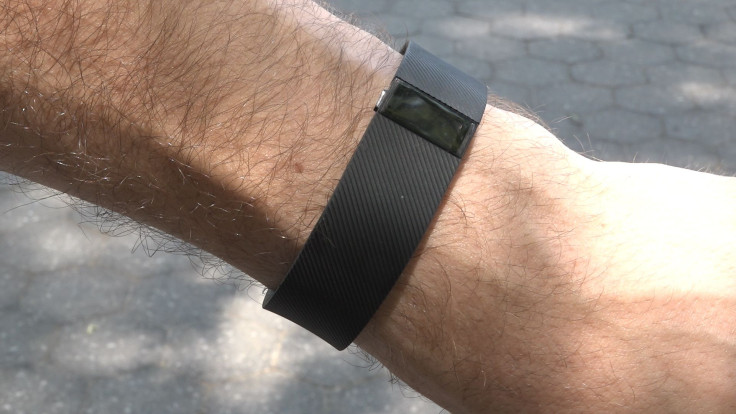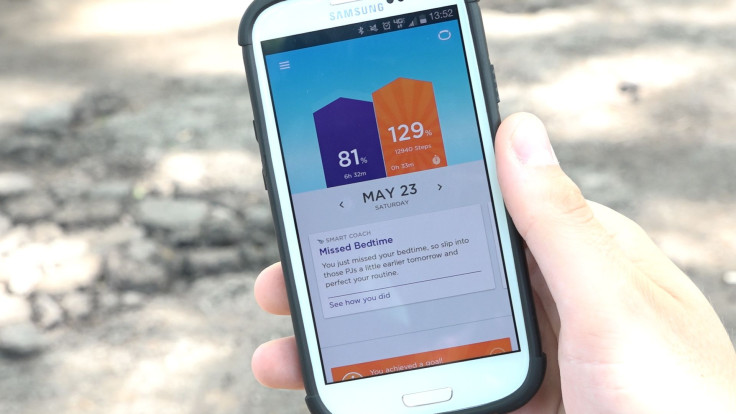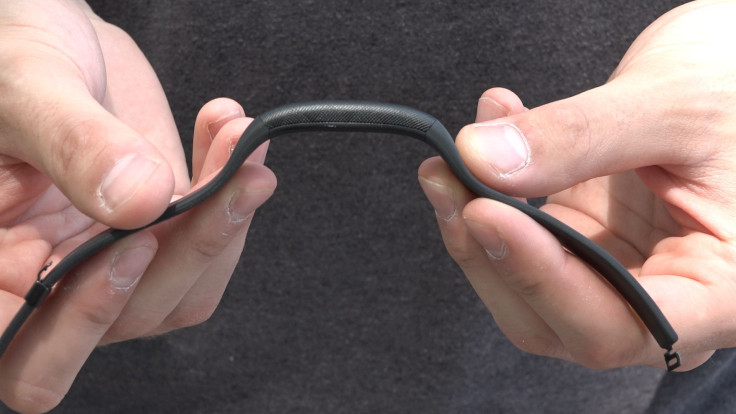Jawbone UP2 Vs. Fitbit Charge: Top Fitness Trackers Do Battle As Smartwatches Loom
The advent of smartwatches like the Apple Watch may eventually erode the market for dedicated fitness trackers, but Fitbit and Jawbone, two of the industry’s heavyweights, continue to produce new devices. The Fitbit Charge has sold well (and replaced the recalled Fitbit Force, which caused users to break out in rashes), but it’s now challenged by Jawbone’s new mid-range tracker: the UP2. Jawbone’s UP2 replaces the UP24, which edged out its Fitbit opponent in our last comparison test. The two have a long history of competition, but the companies' rivalry is not a friendly one.
Jawbone is currently suing Fitbit in California State Court, accusing the world's leading fitness tracker company of systematically poaching their ideas, giving their competition in the marketplace some added heat. That said, there's nothing on the surface that would lead you to believe the two share much. If Fitbit has taken any of Jawbone's ideas, they've been implemented in ways you can't see.
Comfort / Design

The Charge is big, wide, and soft on the wrist. It’s got a bright, simple but easily scratched OLED screen that shows all of the day’s vital statistics, toggled by a single button. It’s made of some tough materials, and on a larger wrist it blends in nicely and the thick rubber body handles sweat decently. As long as you’ve got a large arm, you can easily pull off a casual look with the Charge on your wrist. As with most fitness trackers, it’s not particularly well-suited for formal attire, but its bulky body means it’s constantly hung up on long sleeves anyway. Smaller-wristed folks will be left with a device that looks two sizes too big.
The UP2 replaces the unique-looking, twist-band UP24. The new one cribs the design language of its more expensive brother, the UP3: it’s minimalist, slender, and lightweight. It’s at home on a tinier wrist, but if you’ve got gorilla hands (as I do), the UP2 looks like a Yorkshire Terrier’s collar on your arm. It definitely feels cheaper than the Charge: There are no buttons on the UP2, and it lacks a display, so there’s nothing to show your progress or draw attention to the device at all. But the lack of these things keep the UP2 light, and its lightness makes it much more comfortable during cardio workouts. There are three LEDs hidden in the UP2’s band for workout mode, sleep mode, and idle alert, but you won’t know they exist until they light up.
Neither tracker is waterproof, but both are water-resistant enough to deal with showers.
App

Fitbit’s app has been the same for a while now, though that isn’t a bad thing. The main page displays all of the essentials, from steps taken to calories burned and active minutes. Scrolling down reveals weight goals, hours slept, and some ancillary information. Each day gets its own individual page with the same information, and there’s options to record weight loss and count calories -- it’s simple, but effective.
But Jawbone still has the more robust app. While it doesn’t have the aesthetic appeal of the Fitbit app, it has a lot of small, helpful touches that keep you engaged in using it such as “Today I Will” challenges, healthy eating reminders, sleep coaching, exercise suggestions and statistics from the UP community. There’s also an “Idle Alert” -- you can set the UP to buzz after a certain amount of inactivity. So maybe you won’t sit at your desk all day.
Performance

The Charge is definitely easier to use on the fly. You don’t even need to have your phone -- just hold the tracker’s button down to start or end a workout, plus you can see your daily stats right on the screen. There’s no need to mess around with your phone, though you can always log individual workouts later.
On the other hand, the UP2 is a bit more fussy. Because there’s no button, you’ll wind up managing everything, including stopping and starting exercise logging, in the app. There’s more exercise types to choose from than the Fitbit, and toggling levels of effort is fantastic for more enthusiastic users, but it’s kind of annoying to fiddle with the app when you’re starting a run. There are tapping gestures you can use to log exercise, but they don’t always respond.
The UP and Charge are evenly matched when it comes to battery life - both lasted a full week during normal use, though life varies depending on how often you update and connect the trackers via Bluetooth.
Conclusion

The UP2 is punching up here -- it’s only $99, the same price as the old Fitbit Flex, but it can do almost everything the $129 Charge can do. The Charge is good, and might be worth buying for looks and convenience, but it carries a $30 premium for a screen. And Jawbone still has the better app.
Fitness trackers are in an interesting market position right now: As some dedicated companies have just become household names, mobile manufacturers seek to use smartphone and smartwatch software to eliminate the need for separate, dedicated trackers altogether. I’m not sure they’ve done it just yet or if they’ll ever completely succeed (a good smartwatch is much more expensive than a simple fitness tracker). For the moment, simple trackers still have a place.
© Copyright IBTimes 2024. All rights reserved.






















